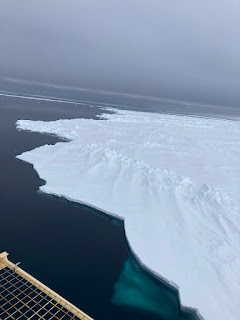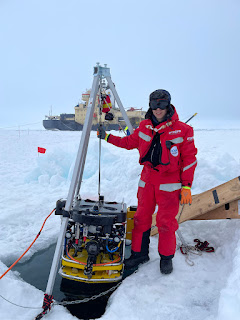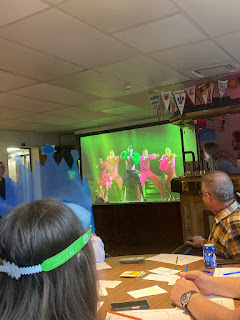Halfway of the expedition & freetime and an artist onboard Oden

Sunny days after the storm & crossing 80N :) On Thursday (25 May) eve, the sun peaked through the clouds at the end of the storm (see photo below). The following three days have been sunny and relatively warm (around -4 degrees C) and quite calm conditions with almost no wind (see photo below). We started moving on Friday (26 May) morning and took a course towards northeast because we wanted to go around a large ice floe and then head north. We were back at the marginal ice zone (at the ice edge) on Saturday (27 May) and we could see Svalbard on the horison in the evening (see photo below). On Saturday eve, we also had our fancy mid-time dinner - already half-way in the expedition?! This means we have three weeks behind us and three weeks to go. Some of us celebrated the sunny weather after the dinner with dancing outside on the helideck, others standing with a drink on the helideck and enjoying the view of seeing the mountaineous Svalbard in the horison. Saturday eve had als







